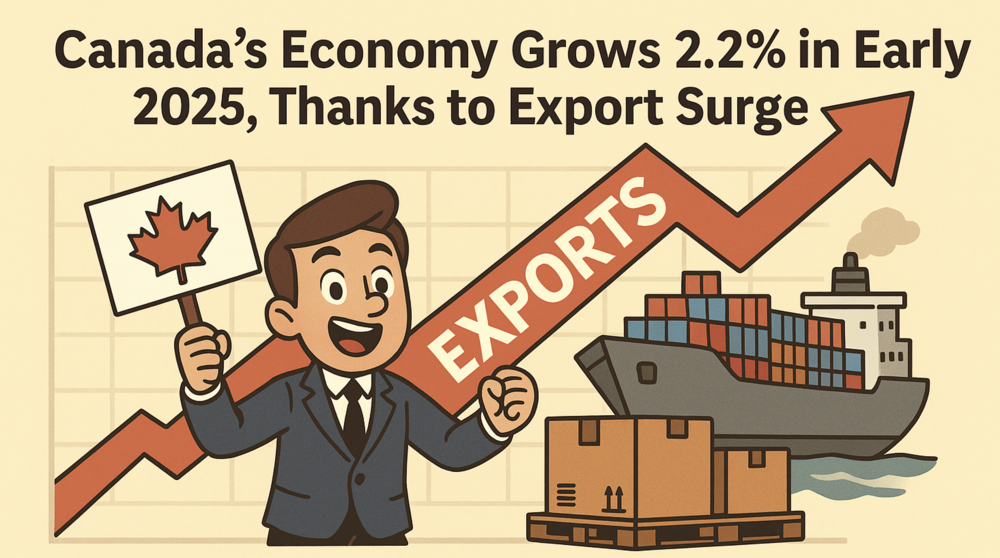Canada’s Economy Surges 2.2% in Q1 2025 Amid Export Boom and Tariff Anticipation

Canada’s economy posted a stronger-than-expected performance in the first quarter of 2025, expanding at an annualized rate of 2.2%, well above analysts’ forecasts of 1.7%. The surprising strength was largely driven by a sharp increase in exports, as U.S. companies ramped up purchases of Canadian goods ahead of anticipated tariff implementations.
This export-fueled momentum came even as domestic demand weakened, highlighting a divergence in the sources of growth. Household spending slowed to 0.3%, down from 1.2% in the previous quarter, and final domestic demand registered no growth, indicating soft underlying consumption and investment trends within Canada.
Key Drivers of GDP Growth
Exports climbed 1.6%, continuing the momentum from a 1.7% increase in Q4 2024. This was largely attributed to pre-tariff stockpiling by U.S. buyers—an anticipatory response to expected trade restrictions that temporarily inflated demand for Canadian goods.
Business investment also played a meaningful role. Investment in machinery and equipment rose by 5.3%, reflecting efforts by firms to shore up capacity and safeguard against potential supply bottlenecks.
In the resource sector, Mining, Quarrying, and Oil & Gas Extraction grew by 2.2% in March, with notable gains in oil sands and offshore production, adding further momentum to GDP from the supply side.
Interpreting the Growth: Trade Anticipation and Supply-Side Effects
The unexpected GDP strength warrants a closer look at structural versus temporary factors. A significant portion of the growth appears to stem from supply-side behaviors related to anticipated trade disruptions:
Inventory Build-Up: Businesses may have boosted production or imports to build stockpiles ahead of possible supply chain interruptions or tariffs. This increase in inventory investment directly boosts GDP but may not reflect sustainable demand.
Net Exports Effect: The surge in exports ahead of trade barriers contributed positively to GDP, while imports—though they also rose—act as a subtraction in the national accounts. The net effect was a rise in net exports, supporting the overall GDP increase.
Broader Implications
While the 2.2% GDP growth headline is encouraging, the underlying fragility in domestic demand suggests that Canada’s economic momentum may not be fully secure. If trade tensions ease or inventories normalize, some of this growth could reverse in coming quarters.
Still, for now, the numbers point to a Canadian economy that’s agile and responsive—leveraging its export strengths and resource base to ride out global uncertainties. Whether this growth can be sustained will depend on how domestic consumption evolves and how international trade policies unfold.
Each Office is Independently Owned & Operated • Brokerage 13072 | © Copyright 2024 . All Rights Reserved